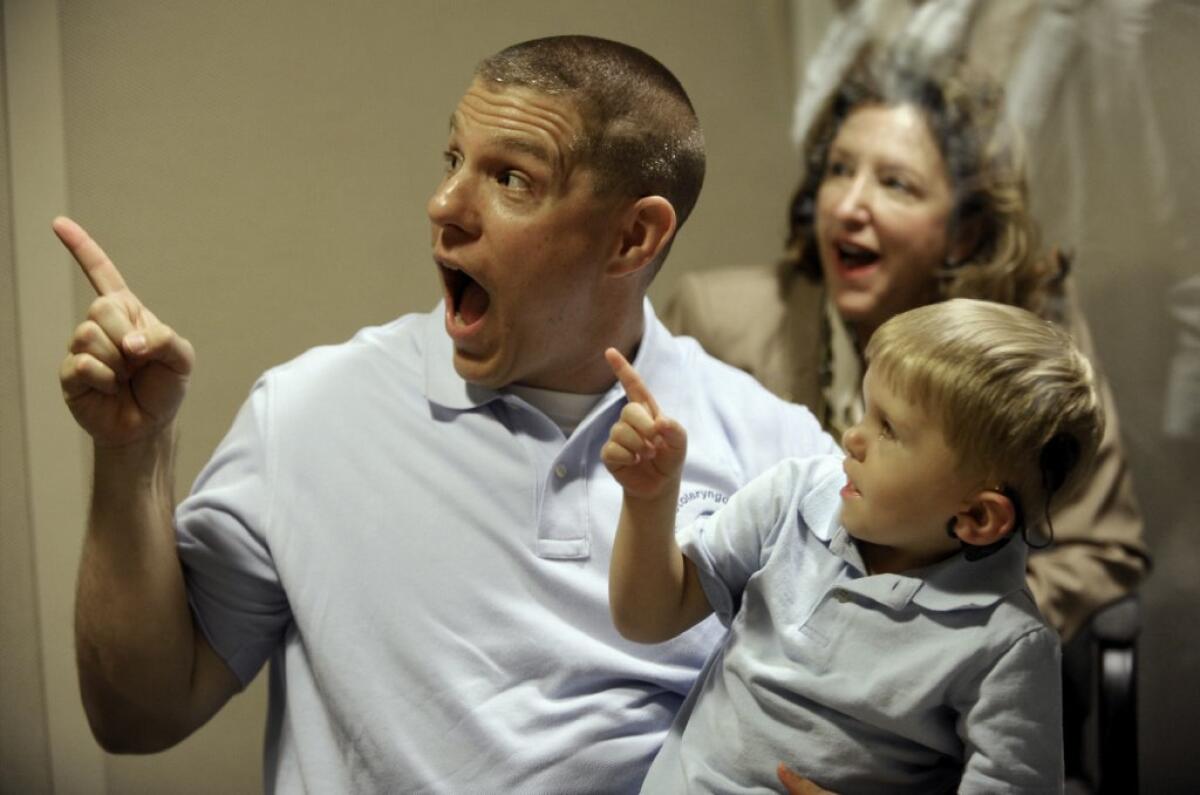Lasker Award: Cochlear implant pioneers took on âimpossibleâ task

Listen up! Three scientists have won the 2013 Lasker Award for clinical research for pioneering work on cochlear implants that have given the profoundly deaf the ability to hear.
The decades of groundbreaking research by Graeme M. Clark, Ingeborg Hochmair and Blake S. Wilson â often in spite of overwhelming technical challenges and disapproval from their scientific peers â drew high praise from experts.
âThese three scientists had the grit to pick âimpossibleâ projects and the courage to remain steadfast in the face of failure and criticism,â Gerard OâDonoghue of the National Institute for Health Research in England wrote in an article for the New England Journal of Medicine. âAbove all, they remained incurably passionate about achieving victory over one of humanityâs most prevalent disabilities.â
Some 360 million people suffer from serious hearing loss worldwide, according to the World Health Organization, and until the last century it could be a lifelong debilitation with profound effects on daily life.
âFor me there can be no relaxation in human society; no refined conversations, no mutual confidences,â composer Ludwig van Beethoven wrote in 1802, about a decade before becoming almost totally deaf. âI must live quite aloneâ¦. Such experiences almost made me despair and I was on the point of putting an end to my life.â
For the young, it can also have serious repercussions to their early brain development, particularly on the development of speech, language and later literacy.
âLow literacy leads to poor educational outcomes, limited employment opportunities and restricted participation in society,â OâDonoghue wrote.
But the design of a hearing aid was considered a technical challenge beyond humansâ medical engineering capabilities.
Our ears are essentially made of three parts. Thereâs the outer ear, the parts that stick out on either side of our heads and gather sound. The middle ear (where our eardrum lies) amplifies the sound, and the inner ear converts the sound to electrical signals that are transmitted into the brain. The inner ear does this using tiny, sensitive hair cells in a nautilus-like structure called the cochlea. When bent by sound, these hair cells trigger an electrical signal that gets sent to the brain. But if these hair cells are damaged, thereâs no way to turn that sound into an electrical signal the brain understands.
(We actually lose hearing over time as those hair cells are destroyed â take this test to find out how good or bad your hearing is.)
Cochlear implants essentially bypass the hair cells, transmitting an electrical signal through the cochlea to the nerve cells. As implants have gotten better, scientists have created electrode arrays that route certain sounds to different parts of the cochlea to help listeners better understand speech.
It is work that was initially seen as both daunting and controversial, OâDonoghue wrote. And the three researchersâ work on cochlear implants have helped make these devices as remarkably successful as they are today, used by some 300,000 people.
Clark, an otolaryngologist at the University of Melbourne in Australia, performed experiments that helped guide the design of a future device. Hochmair, an electrical engineer and CEO of Medical Electronics, founded her own company to help take the device from the lab to the market. Wilson, of Duke University, helped develop speech encoding technology that vastly improves distortion.
But Clark pointed out in a JAMA article today that thereâs one person whose innumerable contributions made possible important work by hundreds of scientists: the unnamed 48-year-old patient who had the first multichannel cochlear implant in 1978. This patient, called MC-1, had a different implant inserted when the first failed in 1983 and had another one implanted in 1998. When he died in 2007, the structures in his ear were studied.
Much has been learned because of this one man, Clark said.
âThe journey that led to the development of the cochlear implant has involved many scientists and numerous clinical studies, but in this case, much has been learned by examining a single patient over 30 years,â Clark wrote.
Other winners of 2013 Lasker Awards were also announced today. Bill and Melinda Gates earned the public service award, and Richard Scheller and Thomas Südhof took the prize for basic medical research.
ALSO:
Eureka! Did crashing neutron stars forge all gold in universe?
A hunt for dark matter in a former gold mine
50 shades of window? âSmart glassâ blocks heat, light at flip of switch
Ancient Egyptians forged jewelry beads with meteorites from space




